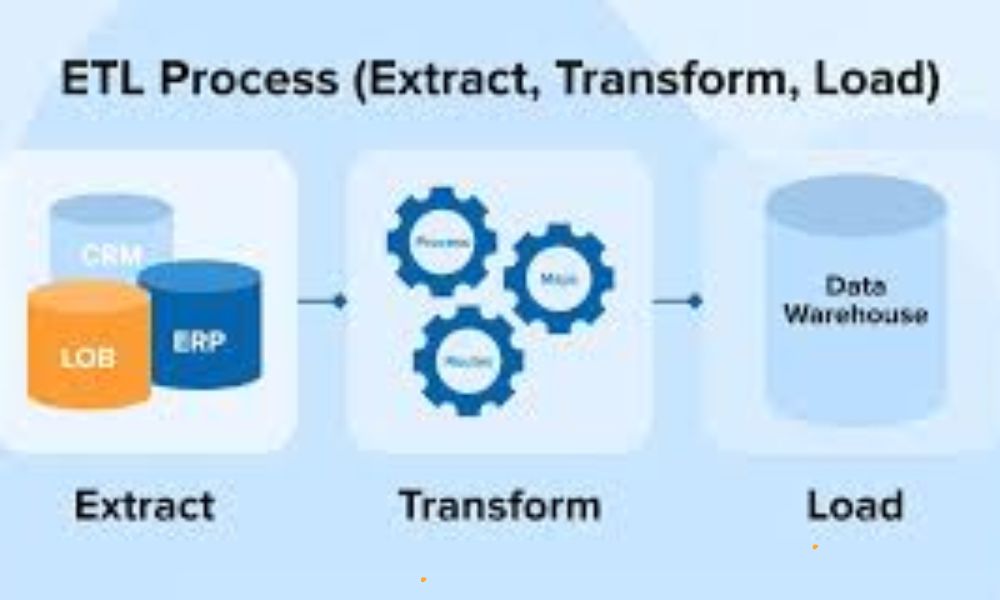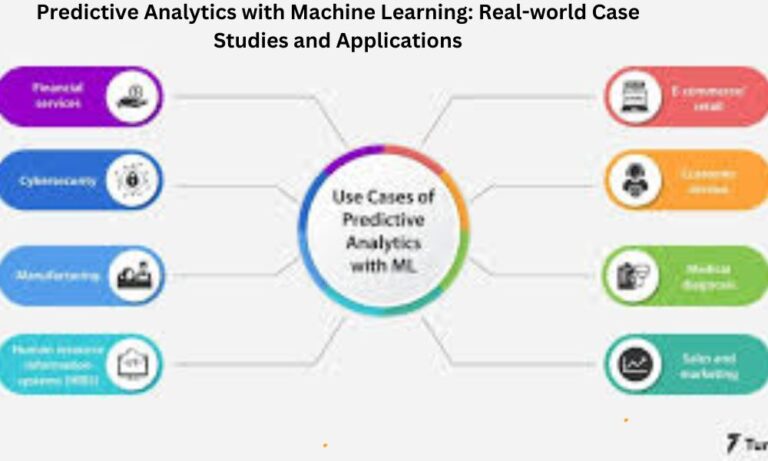ETL Essentials: Understanding Extract, Transform, Load in Data Engineering
Welcome to the world of data engineering, where the seamless integration of information is not just a necessity but a strategic advantage. Whether you’re a seasoned data professional or a newcomer to the field, this exploration will enhance your understanding of ETL basics, data engineering, and the intricate processes that drive effective data integration.
Data has become the lifeblood of business operations. From customer behavior analysis to strategic decision-making, the need for accurate, timely, and integrated data is more critical than ever. The ETL framework stands as a cornerstone in achieving this goal, facilitating the extraction, transformation, and loading of data to create a unified and meaningful dataset.
In this article, we will unravel the essentials of Extract, Transform, and Load (ETL) processes, shedding light on their significance and the pivotal role they play in data integration.
Table of Contents
Understanding ETL Basics
Definition of ETL
At its core, ETL is a process that involves extracting raw data from diverse sources, transforming it into a standardized format, and loading it into a target database. This fundamental approach ensures data consistency and reliability, paving the way for informed decision-making.
Historical Evolution of ETL Processes
The evolution of ETL processes has mirrored the growth of data-driven technologies. Initially manual and time-consuming, modern ETL processes leverage advanced tools and technologies, automating complex tasks and enhancing efficiency.
Core Components of ETL: Extract, Transform, Load
Extracting Data: The First Pillar of ETL
Data extraction is the starting point of the ETL journey. It involves retrieving data from various sources, such as databases, applications, or external APIs. Two primary methods, batch extraction and real-time extraction, offer flexibility based on the specific needs of the data integration process.
Transformation: Shaping Data for Better Insights
Once data is extracted, the transformation phase comes into play. This step involves cleaning, standardizing, aggregating, and deriving new metrics from the raw data. Examples of transformation techniques include removing duplicates, handling missing values, and creating aggregated reports.
Loading Data: Bringing It All Together
The final phase, loading data, completes the ETL process. Here, the transformed data is loaded into the target database or data warehouse. Strategies like full load and incremental load cater to different scenarios, ensuring efficiency and scalability in the integration process.
Significance of ETL in Data Engineering
In the dynamic realm of data engineering, ETL processes serve as the backbone for various crucial functions.
Role of ETL in Data Warehousing
Data warehousing relies heavily on ETL processes to ensure that data is consistently and accurately transferred from operational databases to the data warehouse. This centralized repository facilitates efficient querying and reporting.
Ensuring Data Accuracy and Consistency
One of the primary objectives of ETL is to maintain the accuracy and consistency of data across different systems. By standardizing data formats and resolving discrepancies during transformation, ETL processes contribute to reliable information.
Enhancing Data Quality through ETL Processes
Data quality is a critical factor in decision-making. ETL processes address this by cleaning and validating data, resulting in high-quality, error-free datasets. This, in turn, boosts the reliability of insights derived from the integrated data.
Extracting Data: The First Pillar of ETL
Importance of Data Extraction
Data extraction sets the stage for the entire ETL process. The timely and accurate retrieval of data from various sources ensures that the subsequent steps are based on a solid foundation.
Methods of Data Extraction
Batch Extraction
Batch extraction involves collecting and processing data in chunks or batches. This method is suitable for scenarios where real-time updates are not crucial, and periodic data integration suffices.
Real-time Extraction
Real-time extraction, on the other hand, enables immediate data updates. This is essential in industries where real-time insights are critical, such as financial services or online retail.
Challenges and Solutions in Data Extraction
While data extraction is foundational, it comes with its set of challenges. These may include dealing with large volumes of data, ensuring data security during extraction, and managing the variety of data formats. Solutions involve adopting scalable extraction tools, encryption methods, and format standardization.
Transformation: Shaping Data for Better Insights
Overview of Data Transformation
Transformation is where raw data becomes actionable insights. This section delves into the various aspects of data transformation, offering a comprehensive understanding of its significance.
Common Transformation Techniques
Cleaning and Standardization
Data cleaning involves identifying and rectifying errors or inconsistencies in the dataset. Standardization ensures that data adheres to predefined formats, facilitating uniformity and comparability.
Aggregation and Summarization
Aggregation involves combining multiple data points into a single, summarized value. This is particularly useful in generating key performance indicators (KPIs) and metrics for strategic decision-making.
Derivation of New Metrics
Transforming raw data often includes deriving new metrics or calculations that provide deeper insights. This can involve creating ratios, percentages, or other derived values relevant to the business context.
Case Studies on Transformation Success
Real-world examples illustrate the transformative power of ETL processes. Case studies showcase how organizations have overcome challenges and achieved success through effective data transformation.
Loading Data: Bringing It All Together
Understanding the Data Loading Phase
As transformed data awaits its final destination, the loading phase plays a crucial role in completing the ETL cycle. This section explores the intricacies of data loading and its impact on overall data integration.
Strategies for Data Loading
Full Load
In scenarios where the entire dataset requires updating, a full-load strategy is employed. This is effective for smaller datasets or when periodic updates are sufficient.
Incremental Load
For larger datasets with frequent updates, incremental load strategies ensure only the changed data is loaded, minimizing processing time and resource utilization.
Real-world Examples of Successful Data Loading
Examining how successful organizations implement data-loading strategies provides valuable insights into best practices. These examples highlight efficiency, scalability, and adaptability in real-world scenarios.
Challenges and Best Practices in ETL Processes
Common Challenges Faced in ETL
Despite the many benefits of ETL, challenges arise in its implementation. Understanding these challenges is the first step in developing effective solutions.
Best Practices for Efficient ETL Implementation
Navigating the complexities of ETL processes requires adherence to best practices. This section outlines key strategies, including data validation, error handling, monitoring, and performance optimization.
Data Validation and Error Handling
Ensuring data integrity through validation and implementing robust error-handling mechanisms is crucial for preventing inaccuracies in the integrated dataset.
Monitoring and Performance Optimization
Continuous monitoring of ETL processes allows for the timely identification of bottlenecks or inefficiencies. Performance optimization strategies ensure that the entire data integration process runs smoothly and meets established timelines.
Industry Examples of Overcoming ETL Challenges
Real-world examples from different industries showcase how organizations have successfully addressed challenges, inspiring those embarking on their ETL journey.
ETL Tools and Technologies
Overview of Popular ETL Tools
This section provides an in-depth look at some of the widely used ETL tools, discussing their features, strengths, and suitability for different business needs.
Comparative Analysis of ETL Technologies
Understanding the differences between ETL tools is essential for making informed decisions. A comparative analysis highlights the strengths and weaknesses of various technologies.
Choosing the Right ETL Tool for Your Business Needs
The selection of an ETL
tool is a strategic decision that aligns with specific business requirements. This section guides readers in making an informed choice based on their unique needs and goals.
Future Trends in ETL and Data Engineering
Emerging Technologies Shaping the Future of ETL
As technology evolves, so do ETL processes. This section explores emerging technologies that are poised to redefine the future of data engineering.
Predictions for the Evolution of ETL Processes
Experts predict key shifts in ETL processes, driven by advancements in artificial intelligence, machine learning, and other innovative technologies.
Adapting to the Changing Landscape of Data Integration
Staying ahead in the fast-paced world of data integration requires adaptability. This section provides insights on how organizations can prepare for and embrace evolving trends.
Conclusion: Navigating the ETL Journey
In this comprehensive exploration of ETL essentials, we’ve covered the foundational principles, intricacies of each ETL phase, and the significance of these processes in data engineering. As you navigate the ETL journey, remember that success lies not just in understanding the technicalities but in applying these insights to real-world scenarios.
Frequently Asked Questions (FAQ)
How does ETL contribute to data quality improvement?
- ETL processes contribute to data quality improvement by cleaning and validating data during the transformation phase. This ensures that the integrated dataset is accurate and reliable.
What are the key challenges in data extraction, and how can they be addressed?
- Challenges in data extraction include dealing with large volumes of data and ensuring security. Addressing these challenges involves adopting scalable extraction tools and encryption methods.
How do incremental load strategies enhance data loading efficiency?
- Incremental load strategies enhance data loading efficiency by only loading the changed data, minimizing processing time and resource utilization for larger datasets with frequent updates.
What are the best practices for monitoring and optimizing ETL performance?
- Best practices include continuous monitoring for identifying bottlenecks, implementing robust error handling, and optimizing performance through timely adjustments.
How can organizations choose the right ETL tool for their specific business needs?
- Choosing the right ETL tool involves understanding business requirements and goals. A comparative analysis of popular ETL tools, considering features and suitability, aids in making informed decisions.



